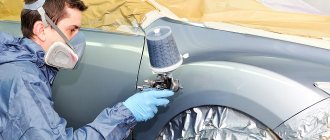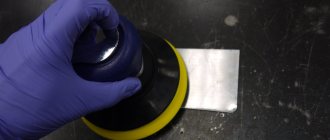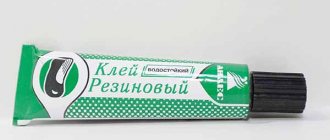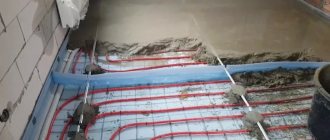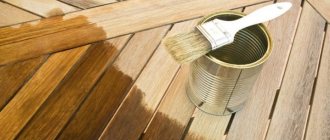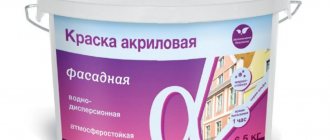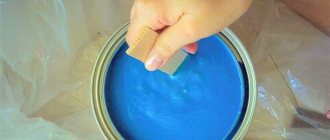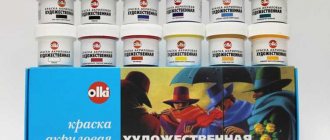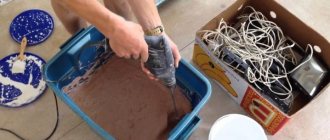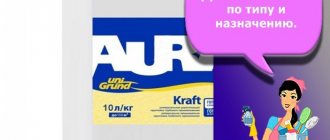Modern paints and varnishes are represented by one-component and two-component compositions. The former harden as a result of the evaporation of liquids contained in paintwork materials, and the latter - when using a special polymerizing substance called a hardener. It cannot be considered an ordinary catalyst for a chemical reaction. It is a direct participant in the process, merges with the base, and gives the paint increased performance characteristics and a longer service life.
Hardeners for paints and varnishes - what are they?
Paints can consist of one or two components. They should not only have the appropriate colors, but also not crack for a long time and, preferably, quickly set and evaporate moisture. However, the last factor does not always take place and needs to be helped to come true. To do this, various substances are used to polymerize the components.
In order for the paint to set quickly and evaporate moisture, various substances are used to polymerize the components.
Purpose and features
Paint hardener is a chemical compound added to paint materials that converts the paint into an insoluble and infusible product. Fusing into the structure of the material, it gives it stable properties.
There are several varieties of this material. Their number exceeds the number of solvents. With the right choice of additive, you can change the elasticity and strength of the paint and varnish material and even slightly change the color.
The properties of the added component directly depend on its chemical composition. In most cases, the substance is used to add to resins, resulting in epoxy adhesive. Features of the hardener under its storage conditions. It is not recommended to pour the substance into another container, since within a short time the hardener for enamel and not only loses its properties and becomes unusable.
After adding the additive to the paint, it should be used within a few hours, after which it will become unusable.
After adding the additive to the paint, it should be used within several hours.
Instructions for diluting resin
How to dilute epoxy correctly, what is necessary? Before starting work, you should prepare a container for mixing, a wooden stick, and 2 syringes for a set of substances. Beginners need to remember that the reactions that occur are irreversible - it will be impossible to restore damaged epoxy. It is better to carry out “test” mixing in small quantities in advance in order to accurately calculate the dosages.
Cooking procedure
Despite the possibility of cold curing when using high-quality hardeners, it is worth warming up the resin a little. This will make the composition less viscous, but crystallization and boiling should not be allowed (boiling will ruin the epoxy, it can be thrown away). During heating, you must regularly stir the material and monitor the temperature.
Calculating the solvent rate is very important. If you add little, the material will remain in the gelatinization stage or will harden, but the surface will be sticky. You must carefully read the instructions for the epoxy; the proportionality of dilution is always indicated there. All compositions are different, and the amount of hardener can vary from 10 to 50%. It is forbidden to replace hardeners with those not specified in the manufacturer’s recommendations!
The required amount of components must be drawn into two separate syringes. Some companies produce the material complete with plastic bottles with marks on them (measuring cups). To pour the hardener, a needle is not needed; it is removed. Thick resin is completely poured through the top of the syringe, removing the piston - it will not be drawn in through the narrow spout.
Producing small volumes of resin
To obtain a small amount of composition for household needs, cold curing is practiced. The collected amount of components is combined in a container and mixed thoroughly but gently. You cannot use a power tool for this purpose; it is advisable to use only a wooden stick. Work is carried out at temperatures up to +25 degrees indoors.
The finished mass should be free of air bubbles and impurities, and the composition becomes absolutely transparent. The consistency of the product, if everything is done correctly, is smooth and homogeneous.
Bulk resin
Since the polymerization reaction of the resin generates heat, only small portions of the product can be obtained by cold curing. When connecting large volumes, the epoxy should be heated in a water bath to +50 degrees. Next, the composition is urgently removed and a hardener is added. It is strictly forbidden for water to get into the resin - this will lead to a complete loss of properties.
You will have to work very quickly after heating the epoxy, so the container and correctly measured hardener must be prepared in advance. Mixing must be thorough.
Mixing components
Many brands of epoxy resins require plasticizers to create the finished product. A number of hardeners combine both properties, so it is worth using DEG-1 and DBP. The hardener is poured in a thin stream, and the composition is thoroughly mixed with the other hand. Ideally, the pouring and mixing process lasts about 5 minutes.
Curing time
How long does it take for the resin to dry after joining the components? This time is determined individually; the upper and lower limits of the period are always indicated in the instructions. Before drying, the epoxy retains its viscosity and fluidity, and is suitable for pouring various products and shapes.
Typically, when diluted in a ratio of 1:10 with a hardener, the material should dry quickly - in 30 - 60 minutes. When the amount of hardener is reduced, this time increases to 2 – 3 hours. When it comes to epoxy adhesives, most cure within 24 hours.
If the specified period has passed and the resin is still sticky, the reasons may be:
- room temperature is too low;
- the proportions of the components are incorrectly selected;
- water got into the mass;
- The hardener is expired and of poor quality.
Advantages of using a hardener
Adding this component has many advantages, although it has its own characteristics, although there are still more positive aspects. Advantageous characteristics of coatings with additives:
- Becomes resistant to sunlight (does not fade);
- The wear resistance of the coating increases. For example, the service life of acrylic paint increases to two decades;
- Using the component gives a 100% guarantee that the coating will dry as quickly as possible;
- The hardener gives some types of paintwork materials a glossy shine, as a result of which there is no need to additionally coat the surface with varnish.
Such compounds have increased resistance to mechanical stress. The elasticity coefficient increases, and the paint does not crack even in corners and joints of parts.
The service life of acrylic paint increases to two decades.
Types of hardeners
Depending on the chemical composition, subsequent features of paints are distinguished. Different types have different curing times and service life. Each type of paint or resin requires its own hardener. Experts conditionally divide the product into two groups.
Each type of paint or resin requires its own hardener.
Driers
Drying agents contain salts of various metals. Depending on the content of these metals, driers are divided into primary, secondary and auxiliary. They are present only in one-component formulations. Essentially, these are additives that speed up the hardening process of the coating. Dryers must be included in oil-based paints.
In order for them to dissolve, it is necessary to maintain the temperature regime. Easily soluble substances are dissolved at 150 degrees, sparingly soluble substances are dissolved at 250 degrees, and only liquid substances are dissolved at only 20 degrees.
These are additives that speed up the hardening process of the coating.
Hardeners
Hardeners are added to two-component paints and varnishes, accelerating their physical and chemical processes. For example, a hardener for acrylic paint, which is widely used for painting cars. In addition to acrylic, this type of hardener is intended for polyurethane and epoxy paintwork materials. It is important to strictly observe the proportions, which are expressed in weight and volume of substances.
It is important to strictly observe the proportions, which are expressed in weight and volume of substances.
Where is epoxy glue used?
The preparation of epoxy allows you to obtain a substance with unique properties that has a wide range of uses. This material, depending on the characteristics of preparation, can be either hard and hard, or soft and plastic. Resin is used for a wide variety of needs:
- Construction. Epoxy has excellent waterproofing properties, which suggests its use when installing various structures for additional protection.
- Electrical, aviation and mechanical engineering areas. The substance is used as a heavy-duty adhesive solution that guarantees high adhesion rates.
- Furniture manufacturing. Epoxy is used as a decorative element.
- Creativity and design. Knowing the correct proportions of epoxy resin and hardener, home craftsmen obtain a thick transparent solution with which they create uniquely beautiful things. For example, souvenirs, jewelry, various decorative and household items.
Epoxy resin is used in conjunction with a hardener
If epoxy is diluted correctly, then after the polymerization (hardening) process a durable alloy is obtained. It is very easy to further (finish) processing and is easy to grind and polish. Moreover, the frozen polymer mass does not pose any health hazard.
Which paints and varnishes require a hardener?
Not every paint with a hardener is sold in finished form. In addition, not all materials require such an additive. It is needed for two-component epoxy paints intended for painting concrete structures.
Metal frames and other objects made of this material are coated with varnishes and enamels containing a hardener. The metal is then resistant to corrosion and has increased wear resistance. It is actively used in enamel intended for the restoration of bathtubs and washbasins. It is also necessary for some varieties of acrylate paints.
Metal frames and other objects made of this material are coated with varnishes and enamels containing a hardener.
Types of polyurethane paints
Polyurethane-based paint materials are distinguished by composition, method of application and degree of viscosity.
Classification of polyurethane paints
| № | Criterion | Kinds | Characteristics |
| 1 | By number of components | One-component | Ready to apply. |
| Two-component | Before application, the composition must be diluted with the product included with the paint. | ||
| 2 | By composition | Organic | The base contains thinners of different markings and a medium-density top color layer. |
| Water-dispersed | The composition is diluted with water, the top color layer is thin and weightless. | ||
| Alkyd-urethane | They contain alkyd-urethane varnish and siccatives, the top color layer is thick and viscous. | ||
| 3 | By method of application | Aerosol | Spray paints are used for metal products of various materials, automotive parts and small surfaces. |
| Liquid | Apply with a brush, roller or spray gun. Used for indoor work and on large surfaces. |
How to use this tool in practice
When adding hardener, it is important to maintain proportions. In addition, this or that product is applicable only for a certain type of product. The manufacturer always indicates the required component on paint cans. For example, some hardeners are designed only for acrylic paints, others for oil-based paints. In this case, not only the choice of hardener differs, but also the proportions.
The manufacturer always indicates the required component on paint cans.
How to properly introduce hardener
First, you should prepare suitable mixing containers. The paint is poured first, then the additive, and finally, if necessary, a solvent is added, which acts as a viscosity stabilizer. How to add it correctly is indicated directly by the manufacturer on the paint packaging.
The paint is poured first, then the additive and finally, if necessary, the solvent is added.
In what proportions
Compliance with proportions is an important condition for subsequent use. As a rule, the manufacturer indicates them in parts, for example, 2 to 1. In this case, you must first pour two parts of the paint base and add one part of the hardener to it.
The excess of hardener should not be more than 10 percent. However, depending on the structure of the base, the percentage of additive content in it can vary from 5 to 25 percent. Exceeding the permissible limits in matte varnishes and primers leads to rapid cracking, but in glossy varnishes and enamels a slight excess of the dose is allowed. The components are mixed immediately before painting.
The components are mixed immediately before painting.
Features of application
The technique for preliminary surface preparation and paint application depends on the type of base.
The need for priming before painting
Polyurethane primer-enamel is used in the same way as other types of similar products. It does not allow the coloring composition to be absorbed into the base and provides better adhesion of materials.
The following rules are followed during the process:
- Do not apply the primer too thickly. Consumption should not exceed 180 g per 1 m². The composition is applied in several layers.
- Air sprays are not recommended. Airless application with a spray gun is allowed.
- Before staining, you need to wait at least 8 hours. The rate of polymerization of wood primer depends on the application conditions.
- Work must be carried out at a temperature of at least +20 ° C, air humidity 60-70%.
- When priming some types of wood, an insulator is added to the product, which neutralizes the effect of tannin oils.
- You need to work away from sources of fire, since the primer is considered a fire hazard.
Tools for work
When applying polyurethane enamels use:
- brushes with artificial bristles intended for applying acrylic paints;
- fur rollers with medium pile (the tool is suitable for distributing all types of dyes);
- horsehair brushes intended for epoxy-polyurethane mixtures;
- trays with ribbed sides to remove excess paint;
- squeegee;
- paint sprayer;
- grinding machine;
- high pressure washer;
- sandblasting units;
- construction vacuum cleaner.
To protect your skin, vision and breathing, you will need a work suit, a respirator, gloves, and goggles.
Tools for painting work.
General recommendations
When applying enamels, the following requirements are observed:
- the paint layer should not be too thick;
- polymerization occurs under the influence of moisture, so heat guns and air dehumidifiers cannot be installed in the room.
How to dilute
If it is necessary to liquefy polyurethane compounds, the following solvents are chosen:
- toluene;
- acetone;
- xylene;
- eluents R-5, R-4.
The thinner is added to the paint in small portions, constantly stirring the material. The appearance of bubbles or an increase in temperature indicates that the product is spoiled. Degassing of the finished mixture is not possible.
Painting the concrete base
The procedure is performed like this:
- Remove cement laitance and dust with a brush.
- Rinse the concrete base with a jet of water under pressure. Heavy contaminants, such as dried glue, are removed by sandblasting (this treatment helps to achieve the desired surface roughness). If the concrete has been painted previously, the coating is cleaned of loose particles, dust and dirt. If it is necessary to remove the old layer, wet sandblasting is performed.
- Pronounced defects are covered with a repair solution. If necessary, cracks are opened, traces of corrosion are removed from the reinforcement, and the metal is coated with a special agent.
- Apply primer. Wait until the surface is completely dry.
- Coloring begins. When working with two-component enamel, mix the base and paint hardener according to the instructions. Leave the material for 10 minutes. Stir the paint again. The finished composition is applied with a roller, brush or airless spray. Each layer is dried for 8-12 hours. It takes at least 3 days for the flooring to dry completely.
Remove dust, apply primer and paint.
Auto coverage
Painting a car with polyurethane enamel is not much different from working with other paint and varnish products.
The procedure is performed like this:
- Clean the body of dirt and remnants of the old coating. Remove traces of corrosion with a rust converter or sandpaper.
- Degrease the surface with any solvent.
- Apply a special primer for metal. The products are alcohol-based, separating, and single-component. It is advisable to use polyurethane primer. It improves the adhesion of the material to the metal and prevents corrosion. The two-component primer contains a hardener. It can be sanded, which helps create a soft surface.
- Covered with enamel. Staining is performed in 2 stages. Each layer is dried for 1-2 hours. If necessary, apply a design to the body using polyurethane enamel for an airbrush.
How can I replace the hardener?
What a hardener is needed for is more or less clear. But is it possible to replace it in the absence of such a thing and if it is urgently needed? Some types of hardener cannot be prepared at home, but at home you can make an analogue of a drier for oily bases.
You will need a metal canister in which you need to put 50 grams of rosin. Melt it at a temperature of 250 degrees. During the melting process, the rosin is constantly stirred. Next, add a small amount of slaked lime (to the completely melted rosin) and heat for a few more minutes until a clear product with a homogeneous structure is obtained.
At home, you can make an analogue of a drier for oily bases.
The hardener seems to be an insignificant, but sometimes very necessary thing. The main thing is to comply with the selection conditions and proportions specified by the manufacturer. Otherwise, after some time, the painted surface will lose its presentable appearance and become covered with cracks.
